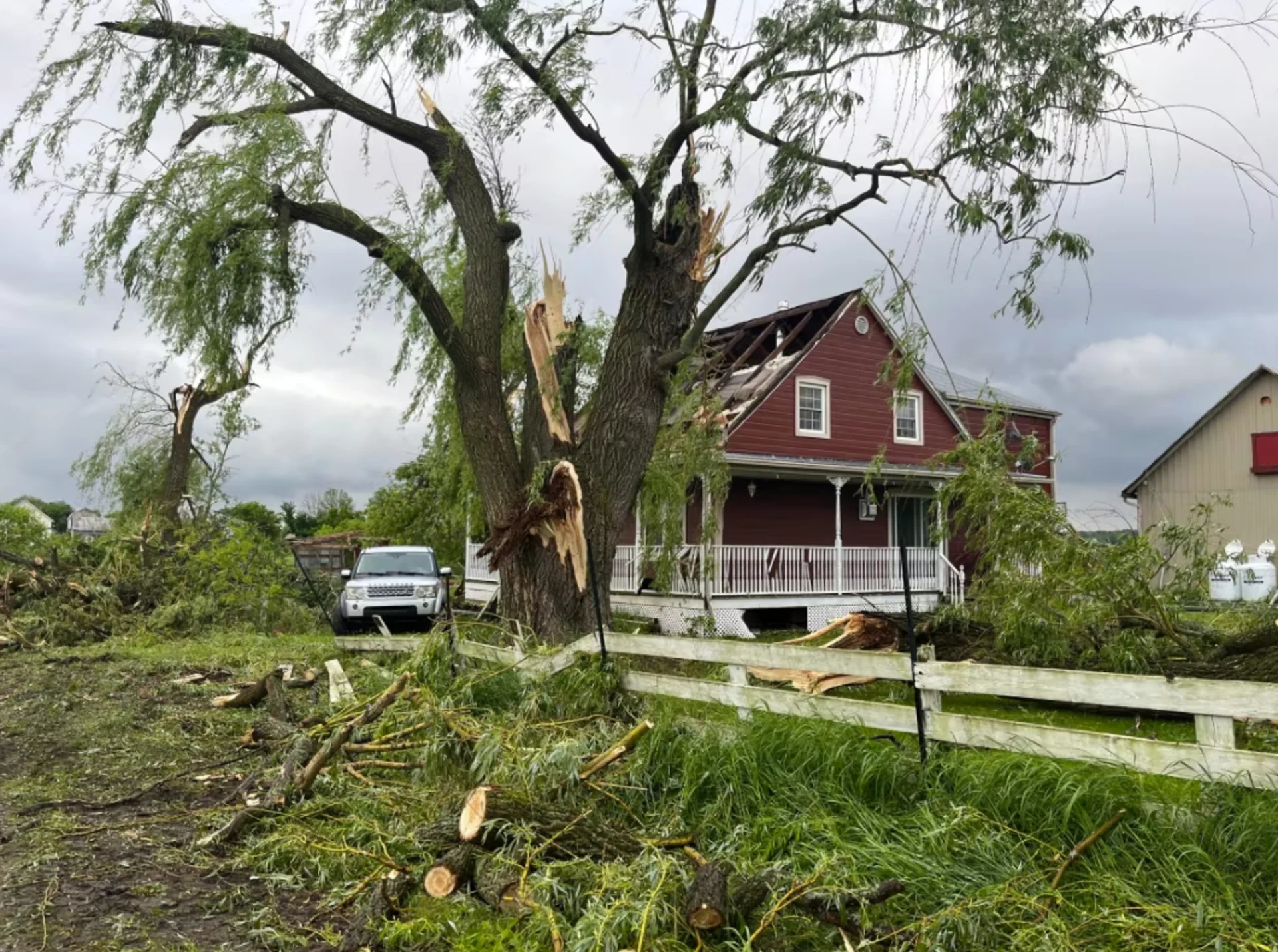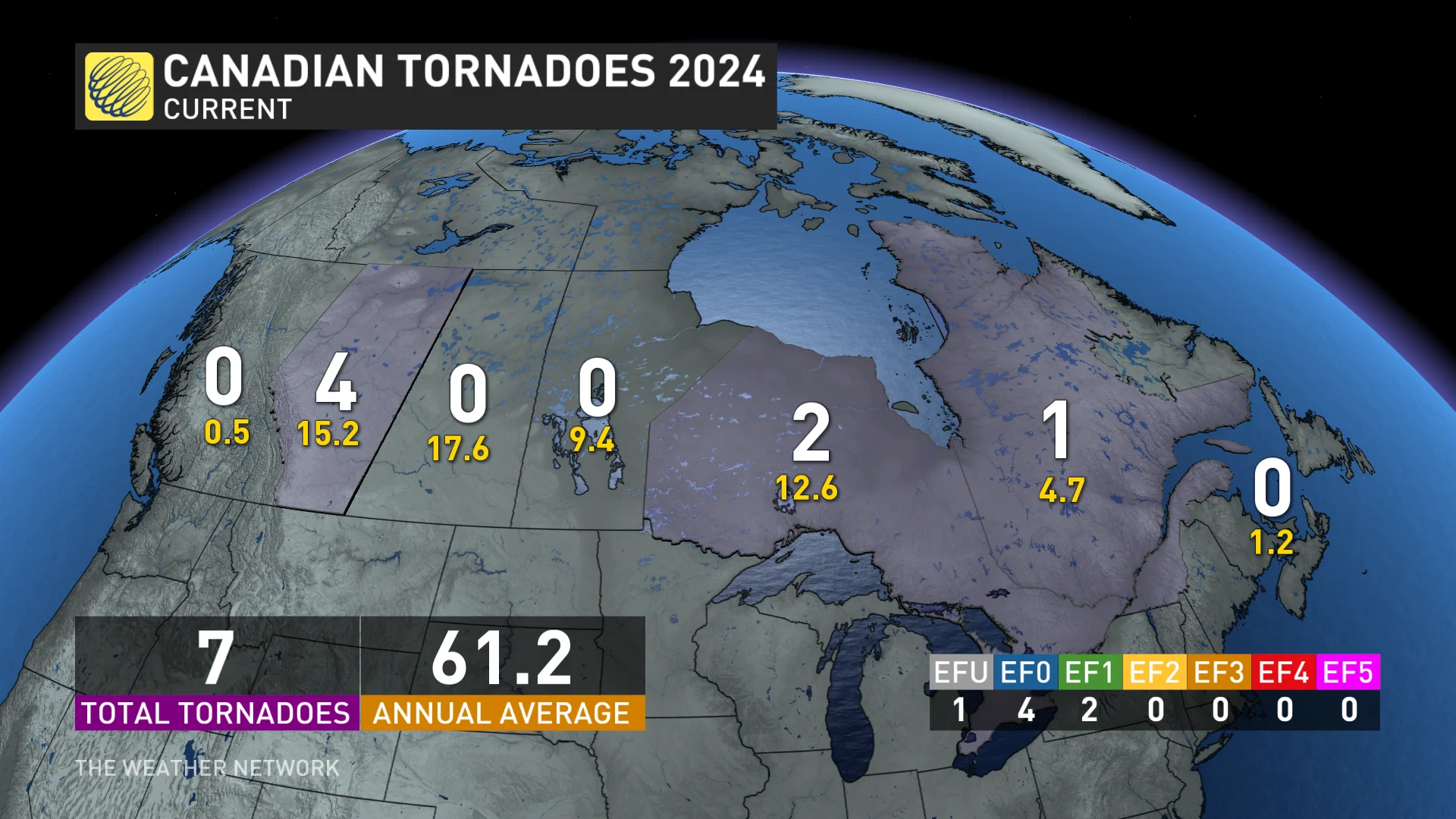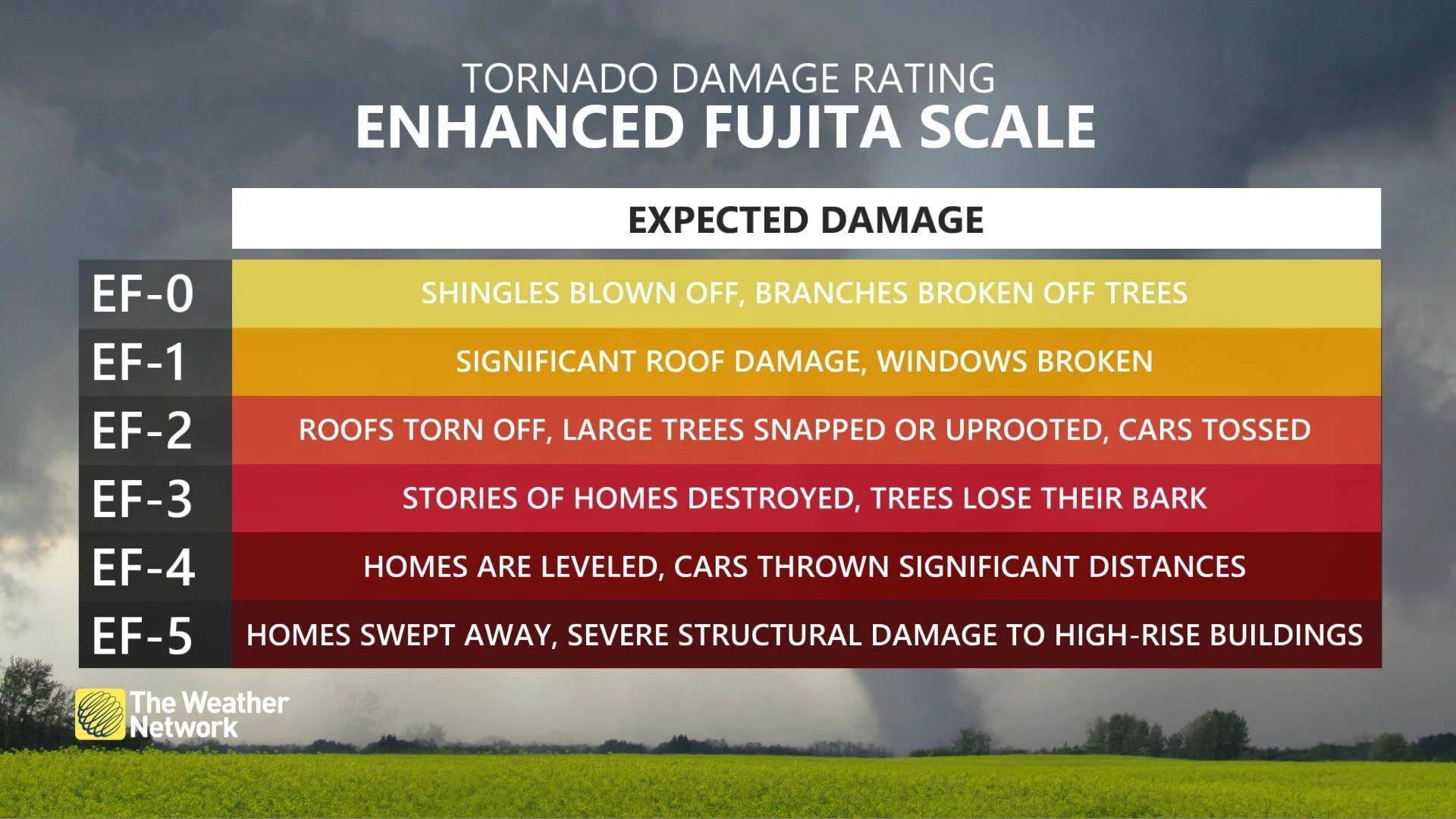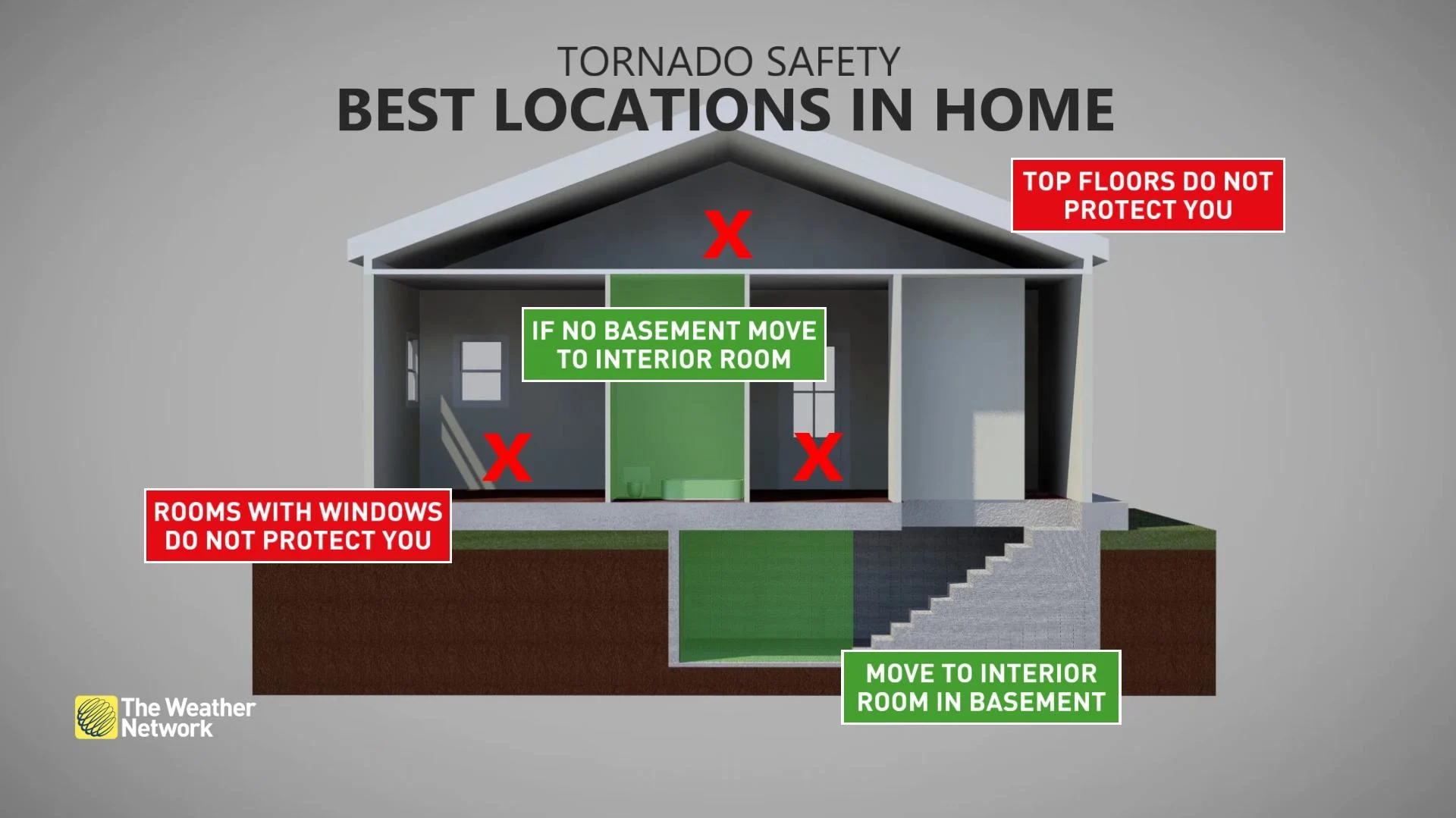
If Canada's tornado alley is shifting east, how can we better prepare?
When Jacques Juneau and Chantal Germain bought their home in Saint-Adolphe-D'Howard, Que., it seemed like the perfect spot.
Nestled among the trees and surrounded by mountains, it felt safe.
"[I thought] there's no chance of any kind of storm, tornado or anything here," said Germain.
But a year after moving to the Laurentians, they were enjoying a drink on the patio when everything went eerily quiet. Within seconds, the wind picked up and the trees began to sway violently.
"We started to hear the large pines all cracking and then breaking in the middle and it went, rapidly, very rapidly at that point and then we could see everything falling," said Juneau.
"It felt like an eternity, but in reality it was about two or three minutes max."
Luckily, they were uninjured and none of the trees fell on their home. But the devastation from the EF-2 tornado — which produced winds that reached nearly 200 km/h — was clear.
Multiple homes were destroyed, trees were ripped out of the ground and roads were blocked by fallen debris. There was no power for days and Quebec provincial police had to be called in to prevent looting.
It took months for the municipality to clear all the toppled trees, said Juneau.
"When you're dealing with smaller communities that are outside of the greater Montreal region, they don't have the budget, they don't have the infrastructure, they don't have the people," he said.
SEE ALSO: Tornadoes can happen anywhere—and cities aren't immune
Uptick in weaker tornadoes
Since 2017, Western University's Northern Tornadoes Project (NTP) has tracked and investigated how many tornadoes are hitting Canada to improve awareness and better predict severe weather.
Using statistics from 1980, Quebec ranks fourth in the country for tornadoes after Ontario, Saskatchewan and Alberta.
But over the past decade, there seems to be more tornadoes happening in Ontario and Quebec and fewer in the Prairies, said NTP executive director Dr. David Sills.

It follows a trend observed in a couple studies from the United States.
"The traditional tornado alley in the plains is starting to lose a bit of their tornado activity and the tornado activity in the east is starting to increase, which is kind of a problem," said Sills.
"There's more population in the east, so you get more people being affected."
Researchers still need to collect more data to confirm the same trend is happening here, said Sills.
Tornadoes in Canada are rated according to the enhanced Fujita (EF) scale. It ranges from EF-0 to EF-5. The more damage from the storm, and the higher the wind speeds, the higher it is rated.
Larger tornadoes are still rare in Quebec, but weaker ones, like the one that hit Rigaud, Que., last month are becoming more frequent, said Sills.
Nearly three-quarters of the 161 tornadoes that have touched down in Quebec since 2017 were rated EF-0 or EF-1, which are accompanied by wind speeds between 90 and 175 km/h.
But a lower rating does not mean these tornadoes aren't destructive or dangerous.
In 2021, a man in Mascouche, Que., a suburb northeast of Montreal, was killed when he tried to seek shelter in a shed during an EF-1 tornado.

Drought may be altering tornado activity
One of the possible factors behind the drop in tornadoes on the Prairies is drought. Over the last few years, conditions in the west have become drier.
"If you're in a drought situation, you're likely not going to be seeing as many thunderstorms and, therefore, not as many tornadoes," Sills said.
Those dry conditions have led to wildfires. Smoke and a lack of moisture snuff out the conditions thunderstorms need to form.
Last year, Quebec did not record its first tornado until July, which was quite late in the season. But the province also had a historic fire season, with more forest burned in 2023 than the past 20 years combined, much of it in June.

The wreckage of a 2022 tornado in Saint-Adolphe-D’Howard, Que. (Google Earth)
Saskatchewan, Alberta and British Columbia all experienced severe wildfire seasons last year.
The NTP is looking at how forest fires affect thunderstorm intensity and frequency.
"There are all these different pieces to the puzzle," said Sills. "We're having to think about these things now for the first time."
Prior to working at the NTP, Sills was part of a team at Environment Canada that did statistical modelling on where tornadoes would most likely show up. Their predictions indicated most of the tornado activity would be over southern Saskatchewan and southern Ontario.
RELATED: Ontario researchers examine why wildfires and tornadoes have tangly relationship
But in 2017, Saskatchewan had 12 tornadoes — and only one last year.
By contrast, Quebec had 34 confirmed tornadoes in 2017 and 2018. In 2022, the year the EF-2 tornado touched down in Saint-Adolphe-D'Howard, there were 32 confirmed tornadoes.
"I think there's a lot more awareness by forecasters now that, yes, we do get tornadoes here quite a bit, but it may be increasing and we have to take this maybe more seriously," said Sills.
More precise warnings key
Researchers don't know yet if the uptick in tornado activity in the east is a temporary phenomenon or something that is going to get worse in certain regions, said Frédéric Fabry, director of McGill University's Bieler School of Environment.
Figuring out what's causing the increase will help municipalities prepare and adapt infrastructure that can better withstand severe weather and keep people safe, he said.

"Tornadoes are very hard to forecast," said Fabry. "I won't see the day where we will be able to say that a tornado is going to strike this street at this time and stop at this street at the time. So there will always be some uncertainty."
What Environment Canada can do is alert people if the conditions are ripe for a tornado, to give people enough lead time to find cover and stay inside.
That warning system has benefitted from a significant investment in technology such as satellites and radar to monitor weather patterns.
"We need to warn enough that it's useful, but not warn too much that we have a cry-wolf relationship with all the alerts that are starting to come up from our phones," said Fabry.
DON'T MISS: ‘This is a tornado emergency’: How forecasters warn of grave danger
"There's going to be a considerable amount of false alarms and we should learn not to get blasé by false alarms."
Under the current system, tornado watches mean there is a good chance a tornado will form in a specific area. A tornado warning means a tornado is happening or about to happen and people in that region should take cover immediately.
If a tornado is imminent, Aaron Jaffe, an NTP researcher who led the team on the ground in Rigaud at the end of May, said you should put as many walls between yourself and a tornado as possible to reduce the risk of being hit by low, flying debris.
If you are caught outside, try to find shelter, Jaffe said. If you are in a car, avoid underpasses and if possible, get out of the car and find a low lying ditch where you are less likely to get hit.
Tornado-resilient communities
For years, the NTP has advocated for hurricane straps to be required under Canada's building codes. Also known as hurricane clips, the small metal brackets can help prevent a roof from being ripped off by securing each truss to the top of the wall.
Back in 2019, Doug Tarry Homes, which is based in St. Thomas, Ont., teamed up with researchers from Western University and the Institute for Catastrophic Loss Reduction to test out some changes intended to limit damage from tornadoes and high winds.
They tested out longer nails for roof sheathing and used special screws that connected the roof framing to the walls to make homes resilient to an EF-2 tornado.
WATCH: Quebec's first tornado of the season causes damage near Ontario border
Tarry says they have built close to 400 homes this way and it's become standard practice for his company. They've also added a different gable roof overhang detail to make it stronger in a high wind event.
"It's a little bit more costly, but not insurmountable," said Tarry. "I'm talking a couple thousand for the entire house to do this and to have a better quality product."
But the Canadian Home Builders' Association (CHBA) said finding the right solution for high-wind situations is not that simple.
The association said the clips alone may relocate the damage during a tornado from the roof-wall connection to the walls and foundation, and that more research is needed before building codes are changed.
Wake-up call
In Ontario, Sills said the threat of tornadoes is being taken quite seriously.
The NTP has developed a relationship with emergency managers at the provincial and municipal level in the province.
"We are at the stage now where we are presenting results and recommendations to policy makers within the Ontario government," said Sills.
ALSO READ: In face of extreme weather, more Canadians turn to crowdfunding for help
Some preliminary connections have been made with emergency preparedness officials at the federal level, but there's still work to do in other provinces, he said.
Germain and Juneau believe communities in Quebec need to adjust their emergency plans to include the potential threat of tornadoes.
Their experience two summers ago was a wake-up call. Every time there is a tornado warning in their area, Germain said she grabs some necessities and heads to a safe place in the house.
"For us, there was virtually zero chance when we bought the property that this would happen. But now, it's rethinking the entire scenario," said Juneau.
Thumbnail image credit to Raphaëlle Drouin/Radio-Canada.
This article, written by Leah Hendry, was originally published for CBC News.










